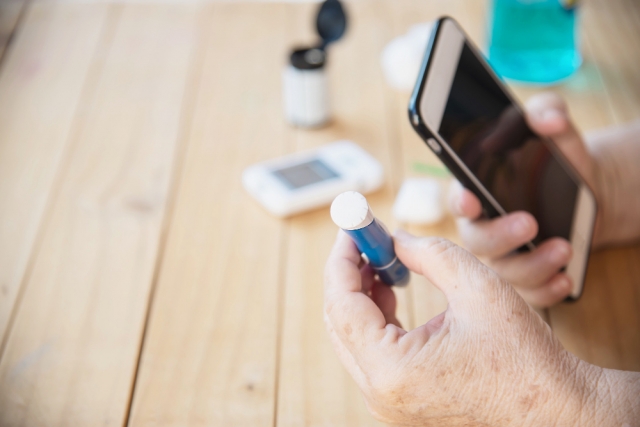Introduction
A sudden spike or a sudden fall in our blood glucose levels can cause several health hazards. It can be life-threatening as well. Therefore, regular checking of glucose levels is essential. Continuous glucose monitoring (CGM) helps to automatically track our blood glucose levels throughout the day and even at night.
The management of diabetes mellitus becomes easier with continuous glucose monitoring. You can check your sugar levels at any time and monitor how sugar levels change during the day. Monitoring blood glucose levels can help you determine how to balance food, medicines, and physical activities.
How does a CGM work?
A CGM works by inserting a tiny sensor under your skin, mostly on the arm or belly. The sensor measures the intestinal glucose level and sends the information to a monitor through a wireless transmitter. The monitor can be easily carried in our purse or pocket. Several models of CGM are available in the market. Some can even send blood glucose level readings directly to tablets or smartphones.
It is beneficial if you have to track your glucose levels throughout the day. This new generation of smart technology has made the management of diabetes mellitus quick and easy.
Features of a CGM
The CGM can be kept On to record the glucose levels while working, sleeping, or exercising. Along with measuring the glucose levels, a CGM has many other special features:
- CGM might start an alarm when the glucose levels are too high or too low. It can save you from an untoward incident. A CGM is especially beneficial for patients with hypoglycemia who suffer from sudden sugar levels drop.
- Information from the CGM can be downloaded on a smartphone or computer to be used for future reference.
- There are many CGM devices where we can note our physical activities, meals, medicines, and blood glucose levels. It is an effective way of management of diabetes mellitus.
- Some CGM devices can send information related to our diabetes to some other person's smartphone. They might be a caregiver, family member, or friend. It benefits children and the elderly, who cannot monitor their sugar levels or take appropriate steps when blood glucose spikes or falls.
Benefits of using a CGM
A CGM can help you in the management of diabetes mellitus. The benefits of using a CGM device are as follows:
- We can check the whole day’s blood glucose level without having to prick our fingers every time.
- A CGM device helps in fewer emergency cases of hypoglycemia where blood glucose levels fall way beyond the normal range of 100 mg/dL. A CGM device gives an alarm in case our sugar level falls far beyond the normal range.
- People who use a CGM device regularly can lead a healthy life by properly managing blood glucose levels. They can prevent severe complications of diabetes like cardiovascular diseases, kidney diseases, eye damage, and nerve damage.
Who can use a CGM?
- A CGM is primarily used by people with type 1 diabetes. Whether a CGM is beneficial for type 2 diabetics is still under research.
- A CGM device can be used by people of all age groups under the prescription of a doctor. Some CGM devices can be used by very young children.
- A doctor will prescribe a CGM if you are on intensive insulin therapy called tight blood sugar control.
- A CGM is also prescribed if you suffer from hypoglycemia unawareness or fluctuations in blood sugar levels.
What are the limits of a CGM?
Although CGM devices can check our sugar level for the whole day, they are not 100% accurate. Therefore, we need to conduct a finger-stick sugar test twice daily to check whether the readings given by the CGM device are correct.
For taking many decisions related to the management of diabetes mellitus, a CGM device cannot be relied on alone. A finger-stick glucose test is needed while determining the insulin dose. Additionally, a CGM device is more costly compared to a glucose meter. Therefore, many people cannot afford to buy a CGM device.
Conclusion
Diabetes is a chronic disease that requires proper management because uncontrolled diabetes for a long time can lead to life-threatening conditions. Management of diabetes mellitus is a prerequisite in heart and kidney patients because diabetes can further alleviate symptoms of the disease. Monitoring diabetes through a CGM device can increase the life expectancy of people with diabetes.






